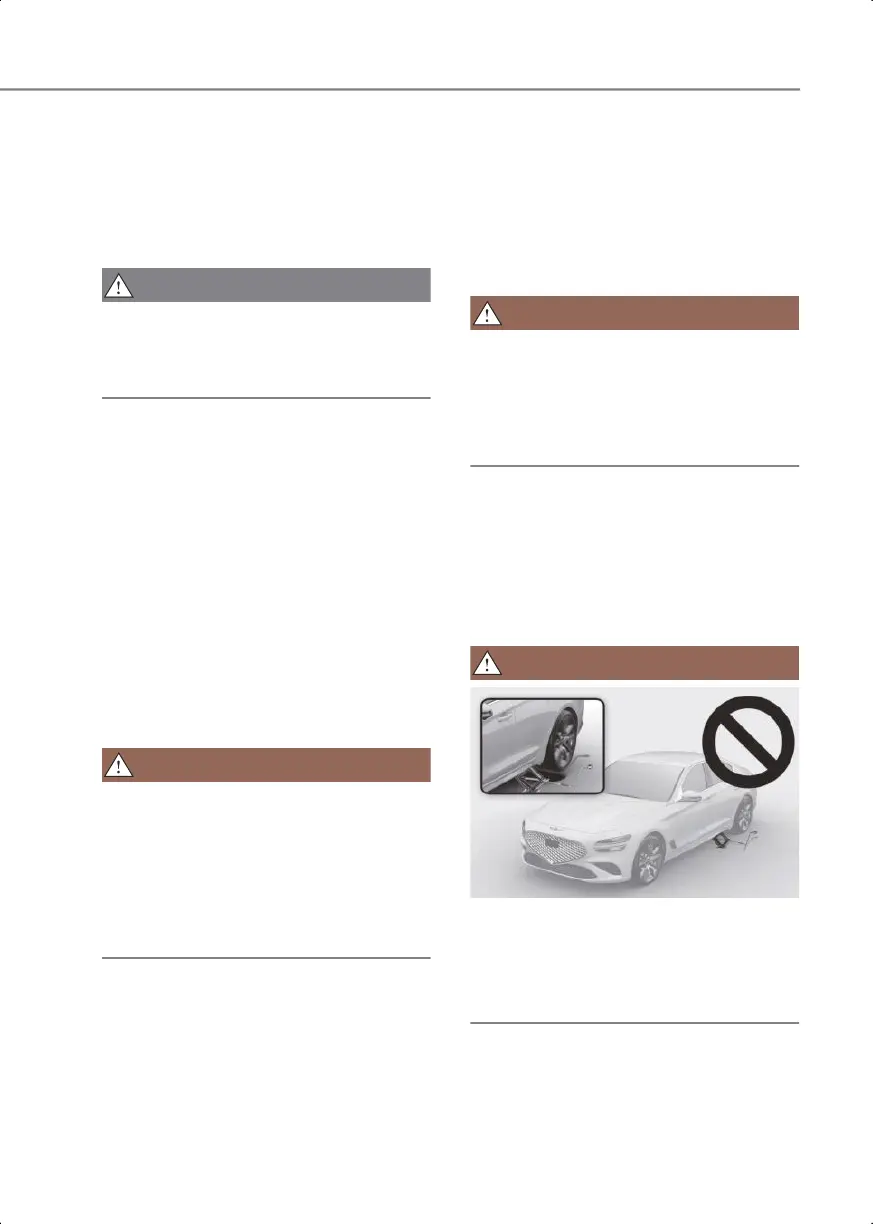6
6-39
Driving through water
• Try to avoid driving in deep standing
water. It may stall your engine and clog
your exhaust pipes.
• Do not change gear while driving in
water.
Always drive slowly in water. If you drive
too fast, water may get into the engine
compartment and wet the ignition system
causing your vehicle to suddenly stop.
Additional driving conditions
• Become familiar with the off-road
conditions before driving.
• Always pay attention when driving
off-road and avoid dangerous areas.
• Drive slowly when driving in heavy
wind.
• Reduce vehicle speed when cornering.
The center of gravity of AWD vehicles is
higher than conventional 2WD vehicles,
making them more likely to roll over
when you rapidly turn corners.
• Always hold the steering wheel firmly
when you are driving off-road.
Do not grab the inside of the steering
wheel when you are driving off-road. You
may hurt your arm by a sudden steering
maneuver or from steering wheel
rebound due to an impact with objects on
the ground. You could lose control of the
steering wheel which may lead to serious
injury or death.
Emergency precautions
Tires
When replacing tires, be sure to equip all
four tires with the same size, type, tread
patterns, brand and load-carrying
capacity.
Do not use tire and wheel with different
size and type from the one originally
installed on your vehicle. It can affect the
safety and performance of your vehicle,
which could lead to steering failure or
rollover causing serious injury.
In an emergency situation, a compact
spare tire (if equipped) or tire mobility kit
(if equipped) may be used. But, do not use
the compact spare tire continuously.
Repair or replace the original tire as soon
as possible to avoid failure of the
differential or AWD system.
OIK063026L
Never start or run the engine while an
AWD vehicle is raised on a jack. The
vehicle can slip or roll off of a jack causing
serious injury or death to you or those
nearby.
0_IK_PE_en_US.book Page 39

